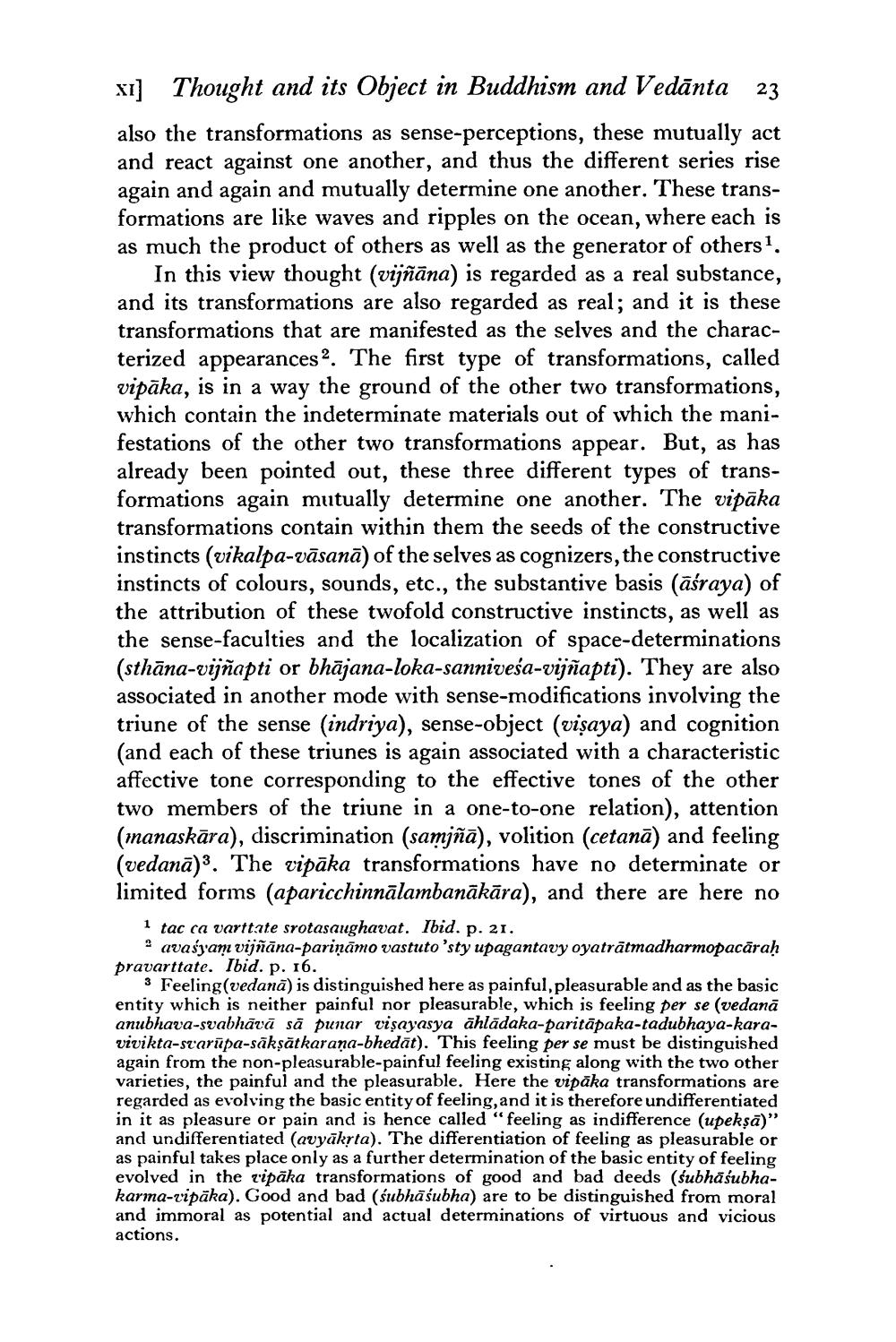________________
XI] Thought and its Object in Buddhism and Vedanta 23
also the transformations as sense-perceptions, these mutually act and react against one another, and thus the different series rise again and again and mutually determine one another. These transformations are like waves and ripples on the ocean, where each is as much the product of others as well as the generator of others1.
In this view thought (vijñāna) is regarded as a real substance, and its transformations are also regarded as real; and it is these transformations that are manifested as the selves and the characterized appearances2. The first type of transformations, called vipaka, is in a way the ground of the other two transformations, which contain the indeterminate materials out of which the manifestations of the other two transformations appear. But, as has already been pointed out, these three different types of transformations again mutually determine one another. The vipaka transformations contain within them the seeds of the constructive instincts (vikalpa-vāsanā) of the selves as cognizers, the constructive instincts of colours, sounds, etc., the substantive basis (asraya) of the attribution of these twofold constructive instincts, as well as the sense-faculties and the localization of space-determinations (sthāna-vijñapti or bhajana-loka-sanniveśa-vijñapti). They are also associated in another mode with sense-modifications involving the triune of the sense (indriya), sense-object (viṣaya) and cognition (and each of these triunes is again associated with a characteristic affective tone corresponding to the effective tones of the other two members of the triune in a one-to-one relation), attention (manaskāra), discrimination (samjñā), volition (cetana) and feeling (vedana). The vipāka transformations have no determinate or limited forms (aparicchinnālambanākāra), and there are here no
1 tac ca varttate srotasaughavat. Ibid. p. 21.
avasyam vijñāna-pariņāmo vastuto 'sty upagantavy oyatrātmadharmopacāraḥ pravarttate. Ibid. p. 16.
3 Feeling(vedana) is distinguished here as painful, pleasurable and as the basic entity which is neither painful nor pleasurable, which is feeling per se (vedanā anubhava-svabhāvā sā punar viṣayasya ahladaka-paritāpaka-tadubhaya-karavivikta-svarūpa-sākṣātkaraṇa-bhedat). This feeling per se must be distinguished again from the non-pleasurable-painful feeling existing along with the two other varieties, the painful and the pleasurable. Here the vipaka transformations are regarded as evolving the basic entity of feeling, and it is therefore undifferentiated in it as pleasure or pain and is hence called "feeling as indifference (upekṣā)" and undifferentiated (avyākṛta). The differentiation of feeling as pleasurable or as painful takes place only as a further determination of the basic entity of feeling evolved in the vipaka transformations of good and bad deeds (subhasubhakarma-vipäka). Good and bad (subhāśubha) are to be distinguished from moral and immoral as potential and actual determinations of virtuous and vicious actions.




